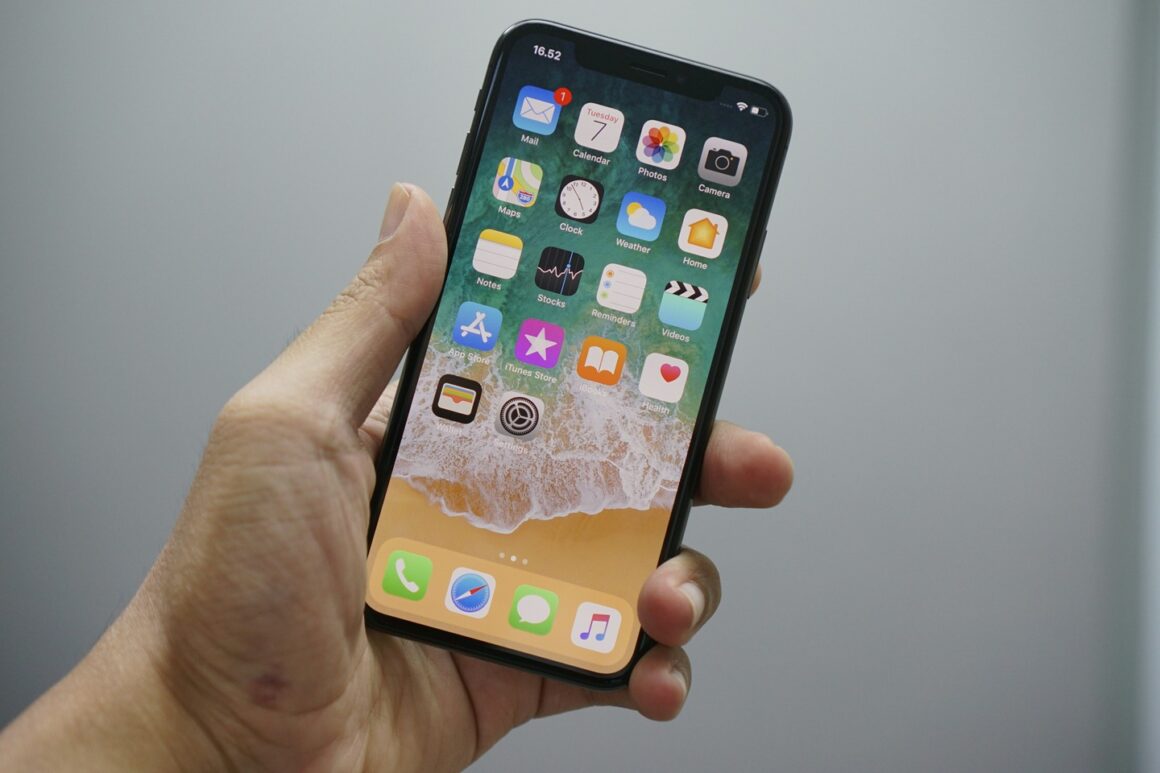1. Introduction
In the age of rapidly evolving technology, keeping your iPhone up to date is more than a convenience—it’s a necessity. However, the process isn’t always smooth sailing. Many users encounter frustrating hurdles when trying to install the latest iOS software update, ranging from mysterious error messages to the update refusing to download altogether. These issues can leave users feeling helpless and disconnected from the latest features, security enhancements, and performance improvements that come with new updates.
The significance of these updates cannot be overstated. Each new version of iOS brings with it critical security patches that protect your device from emerging threats, along with enhancements and new features designed to improve your user experience. Failing to update your iPhone not only means missing out on these benefits but also risks exposing your device to vulnerabilities that could compromise your personal information.
Understanding the common pitfalls and learning how to troubleshoot iPhone software update failures is essential for any iPhone user. This comprehensive guide aims to demystify the update process, offering practical solutions to overcome common obstacles. Whether you’re a tech novice or a seasoned enthusiast, the following insights will equip you with the knowledge and tools needed to ensure your iPhone remains up-to-date, secure, and performing at its best.
2. Understanding iPhone Software Update Failures
2.1 Causes of Update Failures:
iPhone software update failures can stem from a variety of issues, but some culprits are more common than others. Insufficient storage space is a frequent obstacle; updates require a certain amount of free space to download and install, which can be a problem for devices bursting at the seams with photos, apps, and other data. Another common issue is an unreliable internet connection. Software updates are typically large files, and downloading them requires a stable and fast internet connection. Interruptions or slow speeds can cause the update process to fail.
Additionally, software glitches within the iOS itself can prevent updates from installing correctly. These glitches may arise from underlying system errors or conflicts between the current iOS version and the new update. Hardware issues, though less common, can also interfere with the update process. For instance, an aging battery or other failing components can disrupt the installation of updates.
2.2 Impact of Ignoring Updates:
Neglecting iPhone updates can have several adverse effects on your device. Security vulnerabilities are among the most significant concerns. With each update, Apple addresses known security threats, patching vulnerabilities that could be exploited by malicious entities. Failing to install these updates leaves your device exposed to potential security breaches, risking your personal information and privacy.
Moreover, software updates often include optimizations designed to improve performance and battery life. Ignoring updates can result in a slower, less responsive device that struggles with battery efficiency. Additionally, many updates come with new features and enhancements that enhance the overall user experience. By not updating, you miss out on these improvements, potentially diminishing the functionality and enjoyment of your iPhone.
Recognizing the causes of update failures and the importance of regular updates is the first step in troubleshooting these issues. The next sections will guide you through preparatory steps to take before updating your iPhone and provide a detailed troubleshooting guide to address common update failures.
3. Preparatory Steps Before Updating Your iPhone
Before diving into the update process, taking a few preparatory steps can significantly increase your chances of a successful update. Here’s what you need to do:
3.1 Checking Compatibility:
First and foremost, ensure your iPhone model is compatible with the latest iOS update. Apple provides a list of supported devices for each update on their website. Older models may not support the latest version, so it’s crucial to verify compatibility before attempting to update.
3.2 Backing Up Your iPhone:
Always back up your iPhone before initiating an update. This precautionary step ensures that your personal data, photos, contacts, and app information are safely stored, should anything go awry during the update process. You can back up your iPhone to iCloud, or use iTunes (or Finder on macOS Catalina and later) for a local backup on your computer.
3.3 Ensuring Sufficient Storage:
As mentioned earlier, a common reason for update failures is insufficient storage space. To avoid this, check the size of the update in the Settings app and compare it to your available storage. If necessary, free up space by deleting unused apps, media files, and other data. You can also utilize the iPhone Storage feature in Settings to get recommendations on how to free up space.
Taking these steps not only prepares your iPhone for a smoother update process but also safeguards your data, ensuring that you’re ready for any potential hiccups along the way.
4. Step-by-Step Troubleshooting Guide
When faced with a software update failure on your iPhone, follow this detailed troubleshooting guide to resolve the issue and successfully update your device.
Step 1: Check Network Settings
A stable internet connection is essential for downloading updates. If you’re experiencing issues, the first step is to check your network settings.
- Switch Networks: If you’re on Wi-Fi, try connecting to a different network. Public networks can be unreliable, so a private, secure connection is preferable.
- Disable VPN: If you’re using a VPN, disable it temporarily. VPNs can slow down your connection or cause other issues with downloading updates.
- Airplane Mode Trick: Sometimes, toggling Airplane Mode on and then off can reset your network connection and resolve connectivity issues.
Step 2: Free Up Storage
Lack of sufficient storage space can prevent updates from downloading or installing. Freeing up space can often resolve the issue.
- Delete Unnecessary Apps and Media: Review your apps and media files, deleting anything you no longer need. Consider offloading apps you rarely use.
- Clear Safari Cache: Go to Settings > Safari and tap ‘Clear History and Website Data’ to free up some space.
- Optimize iPhone Storage: Use the ‘Optimize Storage’ option for Photos in Settings to store full-resolution photos in iCloud and keep smaller versions on your device.
Step 3: Restart Your iPhone
A simple restart can solve a multitude of issues, including update failures.
- Soft Reset: For most iPhone models, press and hold either the volume button and the side button or the Home button until the power off slider appears. Slide to turn off, wait a few seconds, then press the side button (or the top button on older models) until the Apple logo appears.
- Force Restart: In cases where the iPhone is unresponsive, a force restart might be necessary. The method varies by model, so check Apple’s official guidelines for your specific device.
Step 4: Update via iTunes/Finder
If direct updates on your iPhone fail, try updating through iTunes (on Windows or macOS Mojave and earlier) or Finder (on macOS Catalina and later).
- Connect Your iPhone: Use a Lightning cable to connect your iPhone to your computer.
- Open iTunes/Finder: Launch iTunes or open a Finder window and select your device.
- Check for Update: Click ‘Check for Update’ and follow the prompts to download and install the update.
Step 5: Reset Network Settings
If you suspect network issues are behind the update failure, resetting the network settings can help.
- Reset Network Settings: Go to Settings > General > Reset and tap ‘Reset Network Settings.’ This will erase all current network settings, including Wi-Fi passwords, so be sure to have those handy to re-enter them.
Step 6: Seek Professional Help
If you’ve tried all the above steps and still can’t update your iPhone, it might be time to seek professional help.
- Contact Apple Support: Reach out to Apple Support online or via phone for personalized assistance.
- Visit an Apple Store or Authorized Service Provider: If possible, make an appointment at your nearest Apple Store or an authorized service provider. They can diagnose and resolve hardware-related issues that might be causing the update failures.
5. Preventing Future Update Failures
To minimize the chances of facing update failures in the future, consider these preventive measures:
5.1 Regular Maintenance Tips:
- Regularly Free Up Storage: Make it a habit to review and manage your storage, deleting unnecessary files and data.
- Keep Your iPhone Cool: Overheating can cause performance issues. Avoid exposing your iPhone to direct sunlight for extended periods and remove the case during intensive tasks if it gets too hot.
- Close Unused Apps: Periodically close apps running in the background to free up memory and resources.
5.2 Using Automatic Updates:
Enabling automatic updates is an effective way to ensure your iPhone stays up to date without manual intervention.
- Enable Automatic Updates: Go to Settings > General > Software Update > Customize Automatic Updates. Turn on ‘Download iOS Updates’ and ‘Install iOS Updates.’ Your iPhone will automatically download and install updates overnight while charging and connected to Wi-Fi.
- Keep Your iPhone Charged and Connected: For automatic updates to work, ensure your iPhone is charged and connected to Wi-Fi overnight.
Conclusion
Navigating iPhone software update failures can be a daunting task, but armed with the right knowledge and tools, you can overcome these challenges and ensure your device remains up-to-date and secure. This guide has walked you through understanding the common causes of update failures, preparatory steps to take before attempting an update, and a detailed troubleshooting guide to address and resolve update issues.
Regular maintenance and adopting habits like enabling automatic updates can further reduce the likelihood of encountering update failures in the future, saving you time and frustration. Remember, keeping your iPhone updated is crucial for accessing the latest features, enhancements, and security patches designed to protect your device and personal information.
If you find yourself struggling with an update issue that you can’t resolve, don’t hesitate to seek professional help from Apple Support or visit an Apple Store. The peace of mind that comes with having a fully updated and functioning iPhone is well worth the effort.
By following the steps outlined in this guide, you can enjoy a smoother, more reliable update process and get the most out of your iPhone. Stay updated, stay secure, and make the most of the cutting-edge features and improvements that come with each new iOS update.







